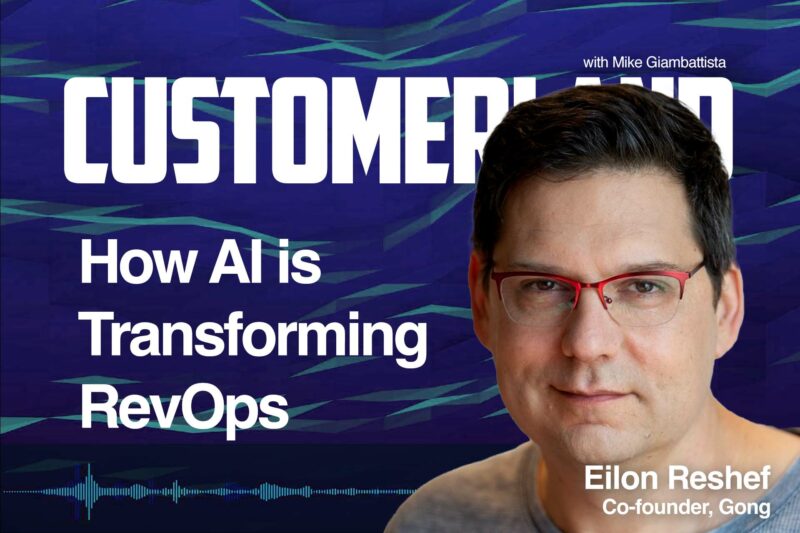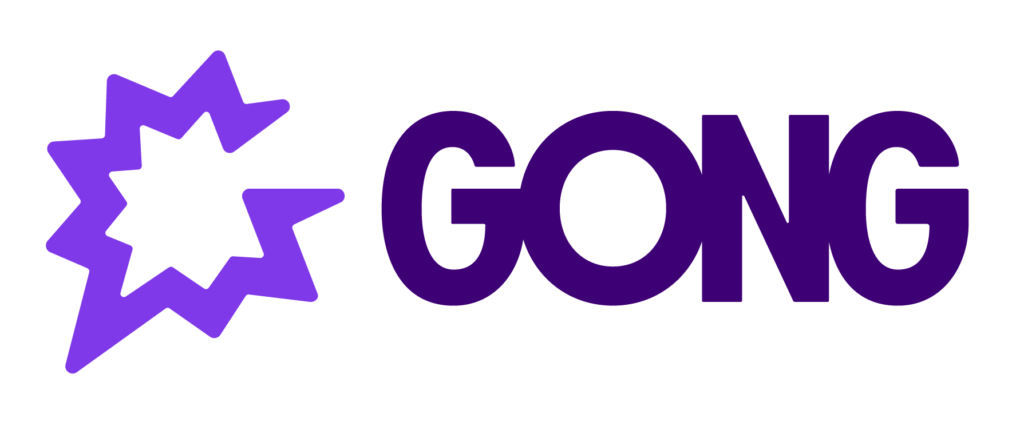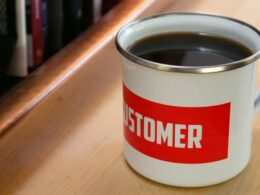Wondering how to hit the bull’s eye in RevOps? Tune in to our lively talk with Eilon Reshef, one of the masterminds behind Gong’s innovative tech. Eilon peels back the curtain on the world of AI-powered data collection and analysis. We navigate the sea of insights this technology offers, eliminating the drudgery of manual data entry, and serving up actionable micro actions for sales pros. We also delve deep into the power of data and how effective usage can have a seismic effect on crucial revenue workflows.
Reshef talks about AI’s growing influence, the industry’s shift towards a more customer-centric approach, and the fusion of roles within revenue organizations. We get a sneak peek into Gong’s roadmap, with its shiny new sales engagement product and ongoing upgrades. The episode wraps up with a look at the future of revenue operations, zooming in on AI and GenAI’s impact.
Read the full transcript below
Mike Giambattista
I’m Mike Giambattista and welcome to CustomerLand. Very honored today to be talking with Eilon Reshef, who is co-founder and chief product officer at Gong, and I’m going to make a very brief introduction just for context. If you’re not aware, gong is, I think, acknowledged as best in class RevOps intelligence. That’s a phrase I just made up. It might be accurate-ish People tell me if it’s not but Alain, as co-founder and chief product officer, is deeply involved in what the product does, why it was built the way it was. But I’m really looking forward to getting your perspective on what’s happening in RevOps as it relates to the rest of the customer journey and how people are leveraging it. And with that, Eilon, thank you really appreciate it. Maybe you could do a more accurate job of describing what Gong is and your kind of role as co-founder and chief product officer.
Eilon Reshef
Sure, and thanks for inviting me. As you said, my name is Eilon, one of the founders, chief product officer at Gong, and I think you put it in a great way. So Gong, indeed, is a we call it a revenue intelligence platform. It powers, I would say, critical revenue workflows which, as you said, revenue operations people are kind of responsible with. The idea is help the revenue professionals, I call it achieve their full potential or maximize their output. So the Gong platform enables this and drives impact in multiple outcome areas helps with growth, decision making, set up performance, get more feedback from the product people and sales methodology is understanding your customer better. So, across multiple outcomes, it drives better performance for the whole revenue work.
Mike Giambattista
I was looking at some of the graphics that describe kind of how Gong works and I have to be honest with you, this show you’re. My ignorance here is that I looked at you know you aggregate all these different signals and channels and the technology kind of rates, graze them and produces suggested outputs. I would say and it always seemed to me, more recently anyway like why hasn’t anybody done this before? This should have been done before. It just seems like a you know, somebody invented the wheel and then there we go. But you’ve got a much more sophisticated take on that than clearly, than what I’ve described. But maybe you could just kind of walk us through kind of a very light product demo, a verbal product demo, if you would.
Eilon Reshef
Sure, and I think you raised a good question why other people didn’t do it. I think if you sort of rewind five to ten years back revenue operations professionals the way they were thinking about maybe running their business, so to speak, is actually asking sellers to enter more and more data into what’s called the CRM system customer relationship management system and they would do it in different ways Say, hey, when you move from stage one to stage two, enter this data. When you kind of finish a call, enter that data. And the idea is, if you collect enough data, maybe you can make decisions.
And I think what people found out over the years and I think why, when we started in 2015, eight years ago, wish we felt that this was broken. I think now everybody realizes it’s broken is that sellers don’t like to input the data. They don’t input it in the correct fashion or accurately. It’s in a constant fight and even once they do, if they didn’t enter anything, you can’t ask any questions that they weren’t like forced to do and it takes time and it’s subjective. So the whole idea and they used to look for a demo, I mean the whole idea is like first of all, start with a data layer, meaning, instead of sellers having to do the job, have a system to the job. It’s like AI 101, just like machine work versus machine work. So we started with capturing video conversation and phone conversations and emails and digital interactions all of the signals that we can collect and then apply an AI layer on top of it, which basically means I understand that the email is a red flag email or that conversations about pricing, etc. Etc.
Once you have all of this, you can start guiding the sellers. First of all, you got some data captures already. You have full visibility into what’s going on and now you can power critical workflows, things like hey, can I help you forecast? Can I help you, can I guide you what dealers need to you needed to pay attention to? Can I help you prospect these customers? Can I help you know the next best action is, etc. Etc. So all those workflows basically driving the efficiency factor. It all starts with the fact that you don’t like act on data that is subjective and entered by humans, but it’s much more data collected and understood by machines.
Mike Giambattista
And I, you know the world of marketing, customer centricity, cx and kind of the broader world that we operate in is peppered with statistics on how poorly so many organizations use the data they collect. You’ve got it. You may have even kind of packaged it intelligently, but there it kind of sits, and it seems to me the way Gong delivers the insights you probably wouldn’t use this phrase in a pitch, but it seems like they’re kind of spoon fed for the people responsible like literally, here’s the next best action based on what you told us. If you press these two buttons in this sequence, then these couple things are likely to happen. And then you know, here you go, broken down into so it’s broken down into micro actions, if you will you know things that can actually be actionable, as opposed to conceptual insights which tend to be, you know, shelved after a while.
Eilon Reshef
Yes, the idea the more you can provide sellers with guidance and even automation, the more efficiencies you can drive. So there is like a completely crazy statistics from I think it comes from Forester, that sellers spend, less than I think, about 23% of their time actually selling. The rest is all sorts of, you know, meeting, preparation, meeting data entry, hr stuff kind of, and the more you can yeah.
Yeah, this is crazy. So I think the more you can guide people it’s like, hey, focus on this deal now, you’re going to be effective the more you can actually replace work by saying, call it automation or content production. It’s like, hey, let me write a draft email for you Now, instead of drafting an email from scratch. It takes you five minutes to edit versus 30 minutes to write. Or here’s a deal summary. You’ve never seen this account before. You’re a manager. It’s the first time you’re helping the seller work with this account. If I can give you the information five minutes asynchronously on your mobile phone while you’re on the way to a meeting, versus having a one hour preparation call, I just saved you 55 minutes. But like, the number one thing I think with all AI systems, but certainly with Gong, is eventually it’s efficiency.
A word from our Sponsor
What could you achieve if you knew what your customers expected ahead of time? What if you could know what customers expect by category and by brand 12 to 18 months ahead of traditional brand tracking methods? And what if you could know exactly where to adjust and where to spend in order to derive the most benefit every time. A customer expectation audit allows you to identify areas that require strategic reinforcement, as well as pinpoint which values will contribute most to an emotional bond with your brand and optimize accordingly.
Customerland has partnered with Brand Keys, the world’s oldest loyalty focused consumer research firm, to bring real world customer expectation audits to brands, brand managers and to CX practitioners everywhere Want to know where your brand stands and exactly what to do about it.
Go to expectationaudit.com and download a sample audit today.
Mike Giambattista
Coincidentally, I was on a call earlier today with someone who’s a RevOps consultant, by the way, who had great things to say about Gong. He was very impressed with me by the fact that I’m speaking to you. The halo effect worked. But I think one of the things I would love to get into with you in this conversation is because you sit at a high level in the company and because so many of your clients are large enterprises and I did take a look at your client roster it’s impressive, to say the least you probably have a perspective on trends that a lot of people just don’t have the ability to see. So many people are just deep in the forest. You get to see how the landscape actually looks and what’s happening. So love to get your thoughts on. Maybe we start with some of the broader trends in revenue, ops and, if you like, how Gong is addressing those, but maybe beyond that, what you see as opportunities or challenges that are coming down the road that companies may not be aware of. But because of your perspective you are.
Eilon Reshef
Sure, I’ll probably cover a few. So first of all, everybody. I just met with 15 revenue operations leaders last week in Half One Bay. We had a annual customer conference and we have a revenue advisory board that basically customer advisory board. It’s all RevOps leaders and very leading enterprise companies. It was kind of nice catching up with them in person for almost a couple of days.
There are certain micro trends and certain more technology trends. I would probably call out like three trends. One is everybody understands that AI changes the game. Everybody’s trying to figure out where can I draw the efficiencies? Nobody wants to be the last person to deploy AI and AI is like such a buzzword that every software you buy has AI. So it’s not about the AI so much as about the efficiency. So I’ll give you an example we just launched last month or a couple of months ago. I sell engagement product helps you communicate with customers and part of it. I’ll help you drop the emails, I’ll create meeting follow-ups, I will help you prospect all of these kind of things, and I think people nowadays understand that it’s all about software needs to do this work that used to be human. So I think that’s one axis.
I think you sort of looked the outside of the technology world more for role description. I think two things have happened. One is especially in the tech scene, which Gong is part of, because Gong is like a technology company. There’s been a very natural shift from hey, grow at all costs to sort of sustainable business and then it kind of transformed the revenue organization from let’s focus just on your business to also focus more on existing business and turn prevention and kind of upsell versus just new business, and so that transforms also the organization.
Right, I pay more attention to people who are working with customers versus launching new customers. And the edge of it which I think all revenue leaders now realize is especially in the tech scene there’s been a function called SDR, sales development representative. That’s basically prospecting and more and more we’re seeing consolidation of this into the core AE or seller role, meaning now sellers are being asked not just to work out of the pipeline but actually create pipeline, which ironically is like how people used to sell 20 years ago, which is like do your own stuff and they kind of diverge because you needed to high growth and then you needed people who just focus on getting new business, and now it’s kind of merging back into the seller role. So maybe it’s the three threads you know, technology kind of how to use AI for efficiencies, and two more like role specific changes, especially for tech companies.
Mike Giambattista
Really interesting. As you were meeting with your advisory board, did you get a sense of how companies might be addressing those challenges? You know, because some of those are cultural frankly you know the kind of dissolution of the SDR layer and merging that with you know the account side. You know that’s not necessarily just an operational decision. It comes with a lot of cultural stuff kind of kind of baked into it. Just one of the hurdles. But as you’re talking with your colleagues about these opportunities and trends, how are they thinking about implementing them?
Eilon Reshef
Yeah, as you said, I think it’s a combination of you know kind of call it cultural slash, like people issues and then technology issues. It’s always together, right? Technology is not going to solve any problem without a workflow, and then just changing people without putting giving them the right tools is also not usually going to be effective, right? So I think all revenue operations leaders are trying, as they’re doing, kind of annual planning, trying to figure out has anything changed in how we structure our business? So, like, given an example, one of our customers basically changed the STR to A ratio which used to be one to one, now it’s, I think they said, one to five, meaning for one for five sellers, there’s only one STR. So this is a gradual process. It isn’t happened one day hey, let’s fire 80% of our STR workforce, but as they hire more people, it’s like hey, your expectations are different Culturally, you have to teach sellers and hold them accountable to generating pipeline.
That’s just one example, and I think it goes back to tools. It’s like what tools do you give them to do the job? Because there used to be tools for STRs and now the AEs require tools a little bit different. So it’s engagement as a system for engaging, and then like when Gong built it because we’ve been at relatively recently we kind of build it with a seller in mind. Let’s the STR in mind works for both. But like that’s the focus and also operational rhythm. It’s like how do you create the right operational rhythm? How do you measure people? How do you hold people accountable? So it’s the systems that let you like hey, here’s the dashboard for progress, here is the annual targets, here’s the quarterly targets, here’s the weekly target. So I can actually measure it more systematically. If you just have like a couple of people, I don’t think you need systems so much. But once you have like five, 10 people and of course we have customers with over 10,000 sellers, the operational rhythm is just a must.
Mike Giambattista
Interesting. Are you able to talk at all about what’s on Gong’s roadmap, what you’re looking to build out and deliver near term?
Eilon Reshef
Yeah, yeah, I mean typically. I mean not everything is public, but generally speaking, it sort of stems from what we have. So we launched basically an operational rhythm product that we call forecast. That was last year Good success several hundred customers. That one is being continuously improved to let people create their own dashboards, configure the thing to their specific kind of environment. So it started with hey, here’s a bottom up forecasting. Now it’s hey, manage your whole business using it by building your own reports, dashboards and whatnot. And earlier this year, a couple of months ago, we launched a mentioned kind of sales engagement product.
So this one is continuously being enhanced to drive more automation. Hey, now it can create a follow up email. Maybe in the next few months it will also create a new outbound email. So this is like requires a little bit more context and even more sophistication. And then at the core platform that we have, which starts with understanding the conversation so here’s a video conversation.
We’re continuously adding more capabilities. Could we automatically score cores? Could we automatically guide you through what you can do better? We’ve launched recently automated summaries using kind of GenAI. Can we create more granular ones? Can we roll them up at the account level? So if I’m selling to a customer X, I can say, hey, did we ever talk with customer X about pricing? Could you summarize this for me, what they have in mind, so these kind of things? So this is a very evolving space, especially with two things that are happening. One is consolidation, meaning customers want one platform that rides it all. Second one is AI and GenAI, which basically means every task you’ve done using a tool five years ago is going to be done differently now and in two, three years.
Mike Giambattista
Right, it’s a learning moment for all of that Huge, huge. I mean I’m going to just go ahead and invite myself into the conversation and maybe as a fly on the wall, but as you’re building out and delivering the next iterations of the platform, I’d love to be just kept informed, and I know that your colleagues are very good about that. But so much of the way you’re pursuing revenue ops mirrors so much of what’s happening in the world of customer experience. The ways that the technologies are being applied, the strategies behind them are very, very similar and it’s about the efficiencies, but maybe not so much consolidating roles, but how do we make those processes more efficient. And it’d be a fun conversation to look at the apples and the oranges, and maybe there’s some learning there for both sides. And in either case, I’ll invite myself in and see if I get accepted.
Eilon Reshef
I’ll be happy to send you I mean Hannah’s on the call, but we can put you even like on our monthly release schedule. Just hey, here’s what do we have, and then always happy to answer questions, Sure.
Mike Giambattista
Would love that Totally. Thank you, yeah, and we have a decent contingent of revenue, ops, consultants and professionals in our world, and I think all of whom will be excited to hear that we’ve spoken, and now there’s some connection with GONG officially, so don’t know what that means for business, but whatever it is, we’ll open up further conversations for you. So with that, Eilon, thank you so much for your time.
Eilon Reshef
Hey, thank you, Mike,














